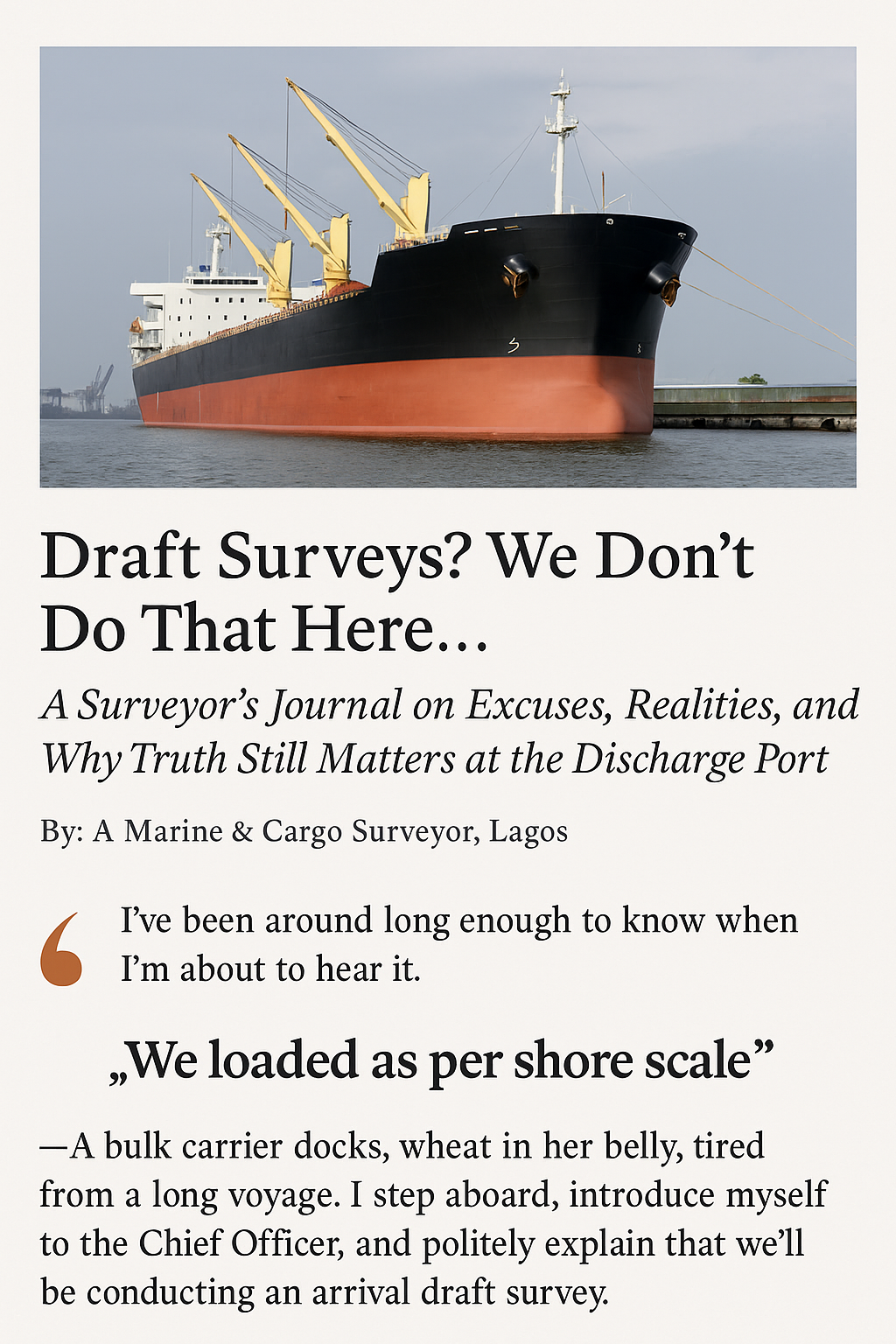By: Kolawole O
Marine & Cargo Surveyor, Lagos, Nigeria

I’ve been around long enough to know when I’m about to hear it.
A bulk carrier docks, wheat in her belly, tired from a long voyage. I step aboard, introduce myself to the Chief Officer, and politely explain that we’ll be conducting an arrival draft survey.
He looks at me — sometimes amused, sometimes irritated — and offers the line I’ve heard a hundred times before:
“We loaded as per shore scale.”
In other words: “We don’t need this survey. What’s the point?”
Let’s be clear. Shore scales at the load port are important. They’re part of the story — but they are not the whole story.
They don't tell you if water seeped into the cargo holds during heavy swell. If a few tonnes were lost due to poor trimming. Or if someone stole a bit of the truth along the way — under cover of darkness or bad weather.
A draft survey doesn’t lie. It doesn’t take sides. It simply tells you what the vessel actually has onboard — based on physics, displacement, and a bit of skill with a sounding tape.
That’s exactly why some people dislike it.
Chief Officers sometimes treat us like we’re here to catch them out. But I don’t come to your ship with suspicion. I come with a scale. What it tells us is what it tells us. Nothing more, nothing less.
In West Africa, where paperwork can sometimes say one thing and reality says another, the draft survey is a rare kind of honesty. It cuts through the noise.
So, next time you hear a Chief Officer say:
“We loaded as per shore scale…”
Ask yourself: Are we afraid of what the draft survey might reveal?
Because in this business — numbers don’t lie. Only people do.
This article was written by Kolawole O, a Senior Cargo Surveyor at Nautiscope Consulting Ltd., bringing field-tested integrity to every vessel touched at Nigerian and West African ports.
If you believe in truth, transparency, and professionally conducted surveys, contact us today.